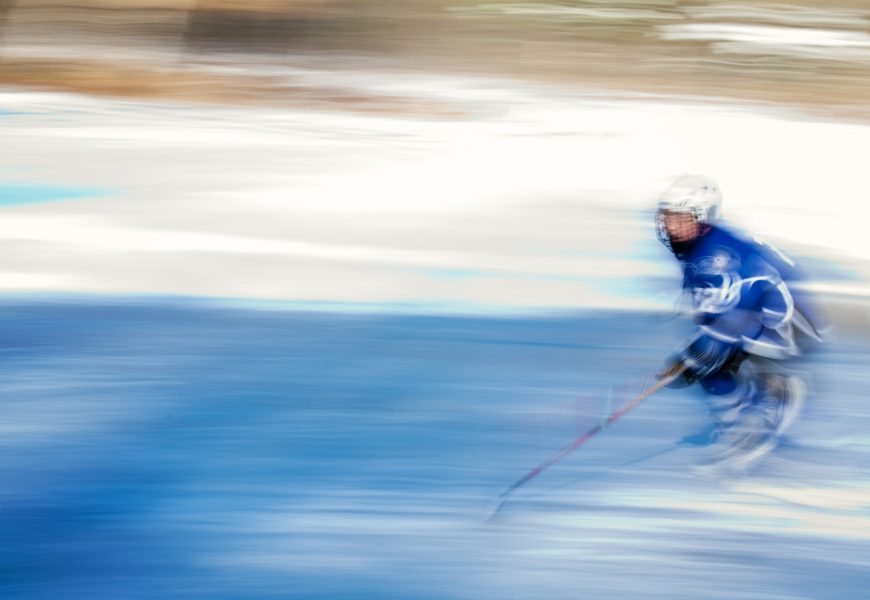My family moved a couple years ago and, when I go home to a place where I didn’t grow up, surrounded by people I don’t know, I often find myself spending a lot of time with my younger brother Henry. Spending time with him tends to involve watching a lot of hockey, and as a result, I have become obsessed with following the sport at the professional level. This is convenient, because hockey is one of the most important means of bonding I share with my brother. It’s something that I cherish seeing, as Henry is eight years younger than I am, and I am always looking for ways to connect with him. We look forward to Wednesday night rivalry games, talk about exciting young players, and argue about who will hoist The Stanley Cup in the Spring. It’s interesting for both of us too as we’ve moved around a few times from Massachusetts to Ohio and now to New Jersey, all the while getting the chance to participate in and learn the culture of different sports teams around the U.S.
As a result of our shared infatuation with the sport, we pay attention to the consistent and steady stream of stories about players being forced into retirement from concussions or other career threatening injuries. A couple weeks ago, the New York Times published several excerpts from a chilling exchange between a sports reporter at the Times, John Branch, and a man named Walter Peat. The publication mostly consists of text messages and emails, parts of a larger correspondence regarding a story that Branch published about Stephen Peat, a former NHL player who has struggled with severe emotional, behavioral and memory loss problems that are suggestive of neurological damage or brain injury. The messages are blunt and tragic in nature. They are indicative of an issue all too familiar to anyone who closely follows professional sports or have had lengthy athletic careers in any capacity, though this story in particular shines a harsh and uncensored light on one of the biggest health issues in all of professional sports.
Occasionally, the issue of concussions in hockey or sports falls out of the national spotlight. But upon looking closely, there are constant reminders of startling and brutal stories, as the article and subsequent publication of the correspondence remind us. Too often, coverage comes up in fits and fades into the background. While the story of Peat is particularly troubling, people have to connect the dots to see how his experience paints a bigger picture of an insidious problem at all levels of athletics, in particular the game of hockey and the NHL.
Last spring, at the height of the Stanley Cup playoffs in May, arguably the league’s most talented and exciting player and a once in a generation talent, Sidney Crosby, was knocked out of game 3 in the playoff series between the Pens and Caps. The Washington Post published an article entitled: “Sidney Crosby’s Concussion Shakes Pittsburgh, and all of hockey.” Crosby has had a number of concussions and missed extended amounts of time in the past. The most recent round of inductions into the NHL Hall of fame featured two of the most offensively dynamic and exciting players of the 90s and 2000s in Paul Kariya and Teemu Selanne, both of whom are also close friends. Selanne’s career spanned 21 seasons of prolific scoring production. While Kariya’s record was in many ways equally as impressive, it was cut short in brutal fashion after sustaining several serious concussions, one that effectively knocked him out definitively after a blindside hit from Scott Stevens in the 2003 playoffs. Eric Lindros, considered one of the best Philadelphia Flyers of all time, is another superstar player whose career was cut short in no small part by a head injury not coincidentally incurred by the same individual (Scott Stevens) who knocked Kariya out of the league. These preceding examples are intended to demonstrate that it’s not just the enforcers who ruggedly ply their way through brief 4-5 year careers that bear the brunt of concussions.
Most people even mildly familiar with hockey know these names but often times lose sight of the fact that there are hundreds of players, who are not superstars, whose careers were cut short or ended before they even began because of concussions. Few stories get the attention and press of star players like Crosby or Lindros. Stephen Peat was one of those forgotten “Ice Guardians,” as the Netflix film of the same name calls them, that until last year had slipped into anonymity following an unspectacular four year stint with the Washington Capitals. The risk of this trend cannot be understated. The article by John Branch highlights the fact that Peat has not received anything close to adequate support from the NHL in coping with these issues that undoubtedly stem from his stint in the league. Countless other players are not conferred the advantage (if you could even call it that) of having their story be communicated to a wider audience, and suffered in silence until it was too much to bear. Recent history tells us that even when the league’s most electric superstars face the prospect of debilitating post-career issues, they won’t take the necessary amount of initiative and responsibility (Gary Bettman, Commissioner of the NHL rebuffed arguments linking concussions and CTE as recently as 2016. CTE is a degenerative brain disorder that has been discovered in a number of ex-professional athletes. It is worth noting that there is currently a lawsuit against the NHL including 105 plaintiffs who are former NHL players). What will it take for the NHL to get to this point is a larger question? For now, all we can do is shed light on the stories and understand that this problem is here to stay unless those responsible for its continuation and the safety of the affected individuals are held to account.









